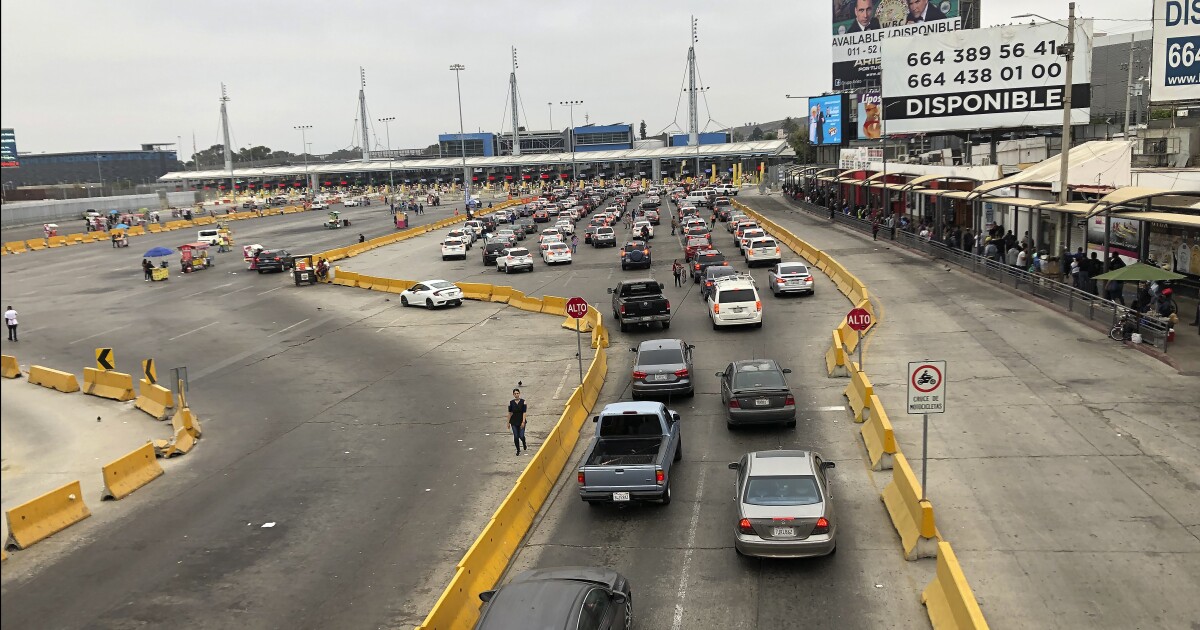Opinion: Borders are finally reopening, what have we learned?

A few days ago, the US government announced that after nearly 20 months, the land border with Mexico will reopen to non-essential crossings for people who have been fully vaccinated with vaccines recognized by them or by the World Health Organization and according to the definition of each manufacturer. In most cases, it is 14 days after the second dose.
The Mexican government is making an effort to make people believe this reopening is the product of their efforts, and when it was closed they said it was a joint agreement and even a Mexican proposal.
None of this is true, the decision to reopen the borders, as it was to close them at the time, is an entirely American one. So much so that in practice, the borders were closed only from south to north and there were absolutely no restrictions on entering Mexico. In fact, if the decision was Mexican, one might wonder why it was not closed when entering Mexico or why the southern border was kept open.
On the contrary, the duration of this measure could have been greatly shortened if Mexico had done the right thing. From the start, everything was done wrong or at least different from what they did in the States. At the initiative of the Mexican government itself, insufficient detection tests were applied, casting doubt on almost any figure, a poor record of prevalence and mortality was kept, preventive measures, particularly the use of mouth coverings, were greatly reduced, and vaccinations were greatly reduced. Late and in millions of cases with vaccines that the neighbors do not recognize. This is bad for the whole country, but on the border with the United States, they are being shot.
But this is not the most dangerous thing, but for all that time, the Mexican government has shown that it does not understand the dynamics of the border, and therefore does nothing for them.
It is unfortunate because what happened in the border communities leaves many lessons that with this situation we are far from learning.
The economic aspect was emphasized. In light of the losses caused by the absence of Mexican clients in business in the border cities of the United States. However, this is only part of the problem, and in any case should be a greater concern for the American side. Perhaps it is not known that these companies and their employees received assistance from their government, in contrast to what happened and is happening on the Mexican side, where each one had to “scratch his fingernails”.
Many non-basic crosses are already purchased from the other side. Items are generally cheaper, there are more choices, purchase guarantees are respected and customer service is much better. But for residents of the Mexican border, “the other side” means so much more.
A very high percentage of the frontier population have immediate relatives and friends living on the American side, and in practice, families and social circles are binational and scattered between the two sides. By closing the borders, this natural distribution, which occurs over time and even generations, has become a split. Although it is estimated that half of the border residents on the Mexican side do not have a visa to cross, they all live at the border in their own way.
For social purposes, a frontier is not a complete set but a set of binational communities. For residents of Ciudad Juárez, for example, what happens in the neighboring American city of El Paso is more important than what happens in Chihuahua, the state capital, and the same can be said of Tijuana-San Diego, the binomial Mexicali. Calexico, los dos Laredos, los dos Nogales, Matamoros-Brownsville, etc.
This is the vision that the epidemic lacks and whose absence has clearly demonstrated, that of binational regions that share problems and therefore must share solutions. This includes, as a priority, the issue of health. It sounds fanciful and not about removing borders, which is more ideal, but if the binational local mechanisms of care were available, at least in preventive strategies that would vaccinate the population of the region, no matter which side they reside on, all would win. If we have to learn something after 20 months, it is that vaccination on one side only or at very different times is of no use.
Many borders have been closed due to the pandemic, but not for long. Twenty months in a region that interacts daily is causing very great damage to the social, economic, cultural and educational life of the region, and instead of trying to present its reopening as an achievement, one must think about what needs to be done that does not come back and happen.
Jorge Santibanez is president of the Mixa Institute
TW: mixainstitute

“Coffee fanatic. Gamer. Award-winning zombie lover. Student. Hardcore internet advocate. Twitter guru. Subtly charming bacon nerd. Thinker.”











